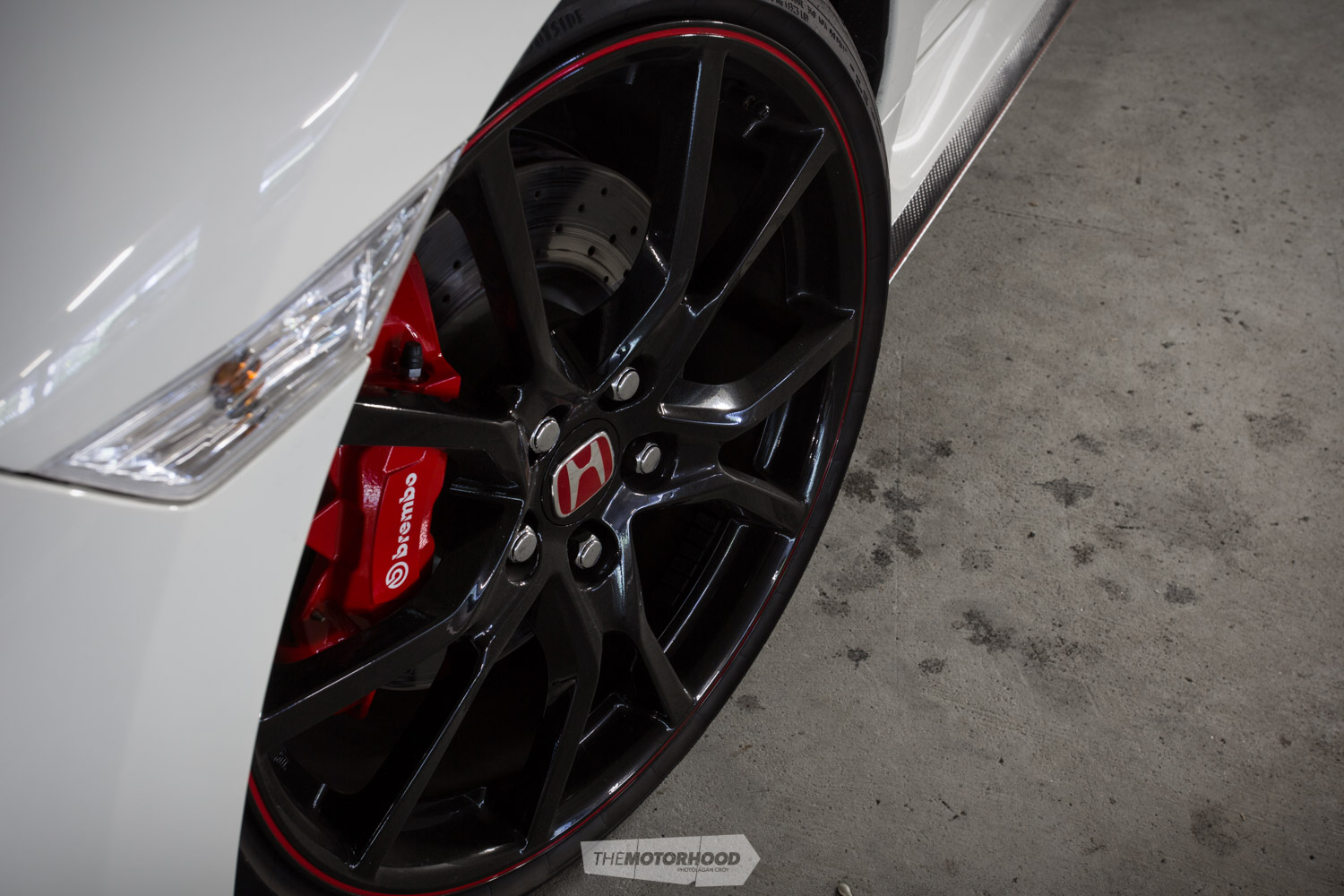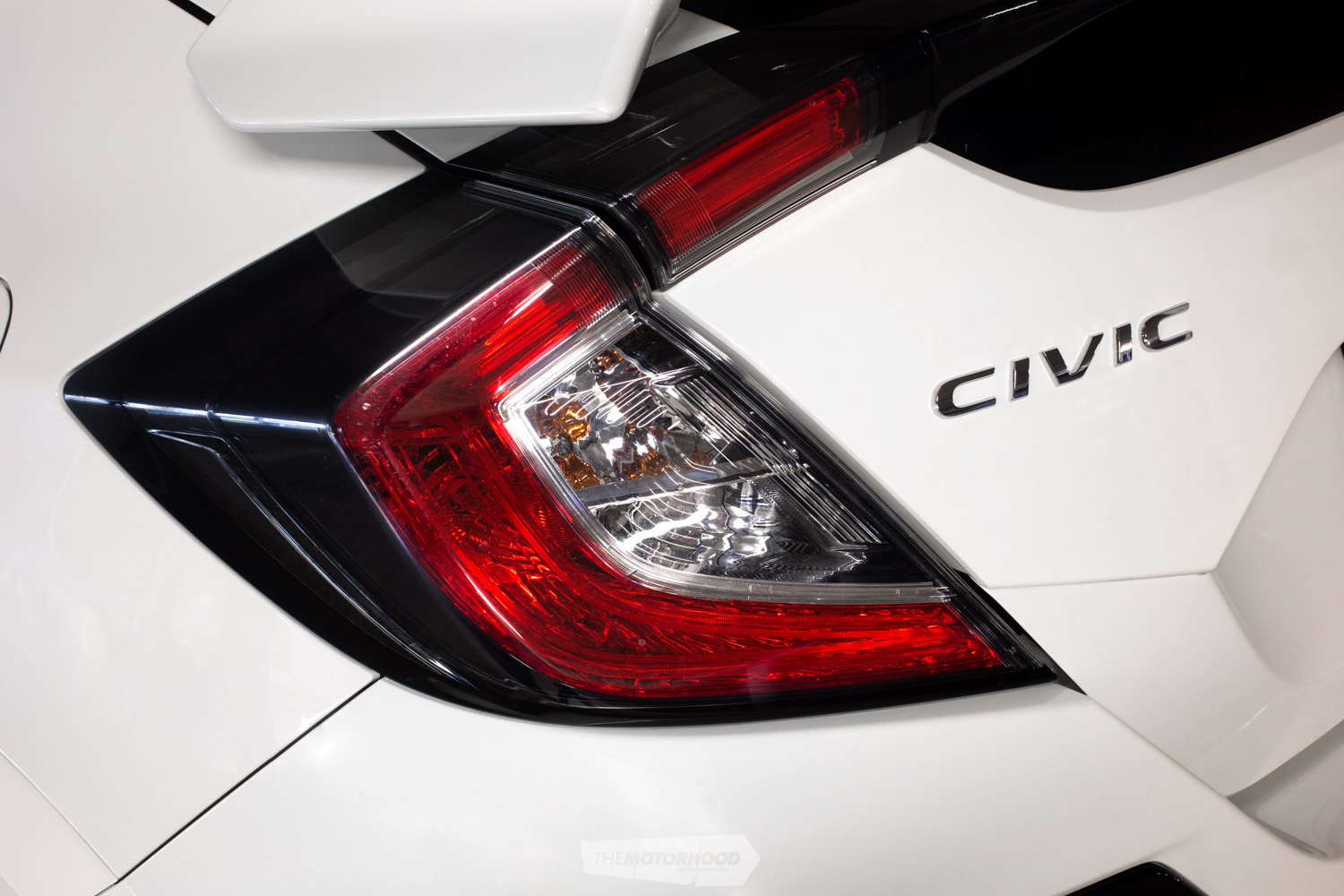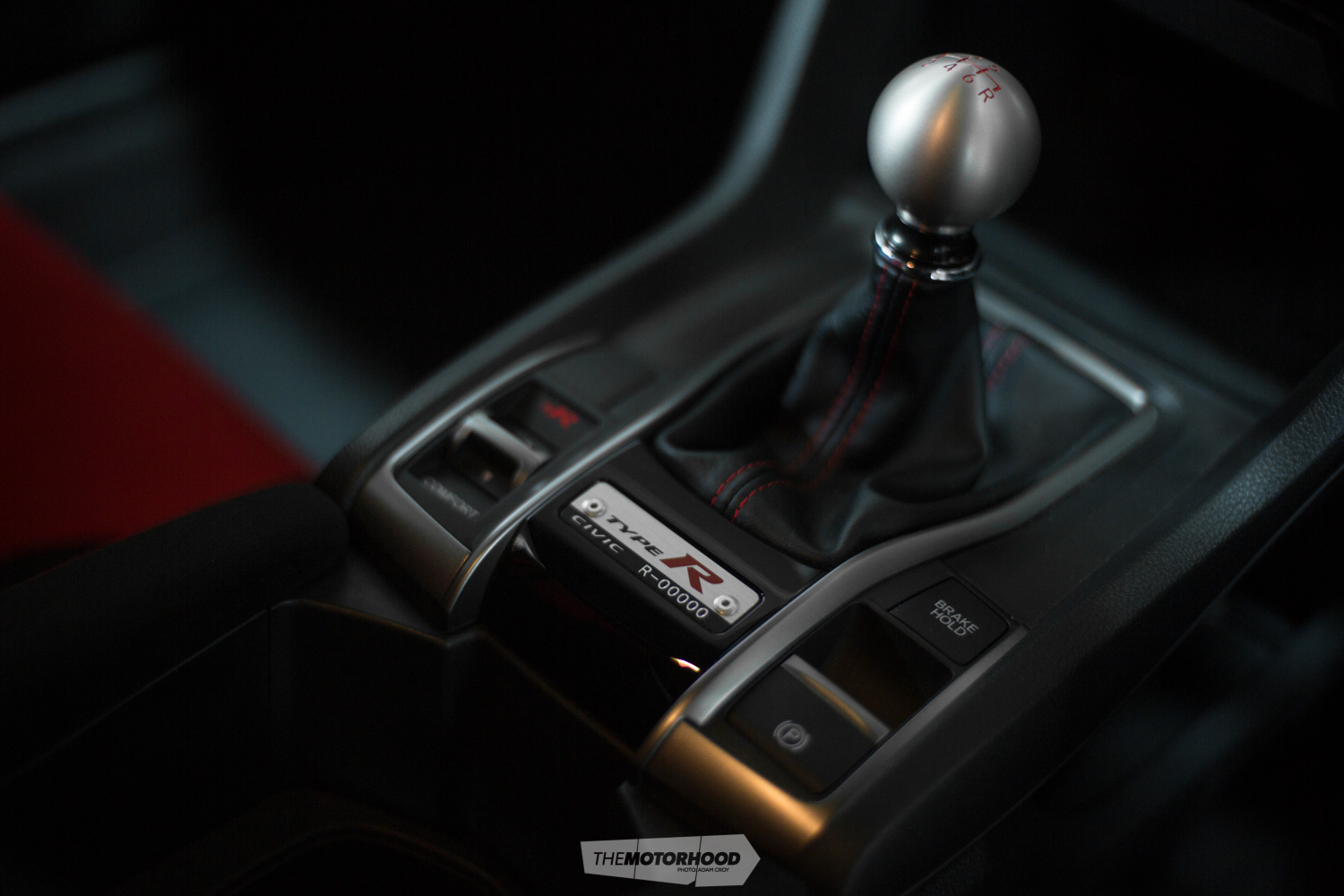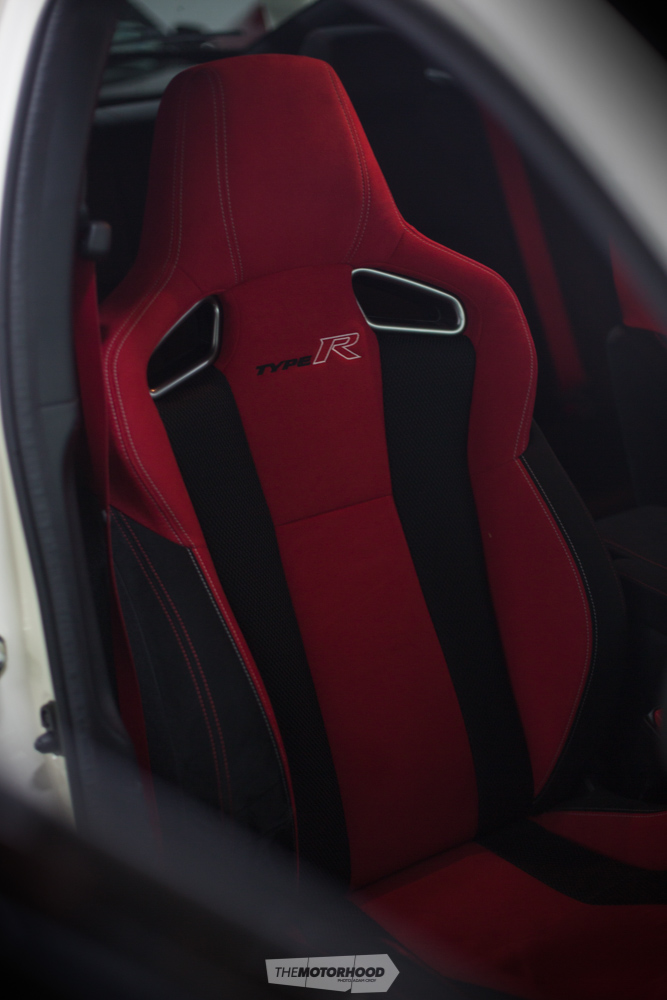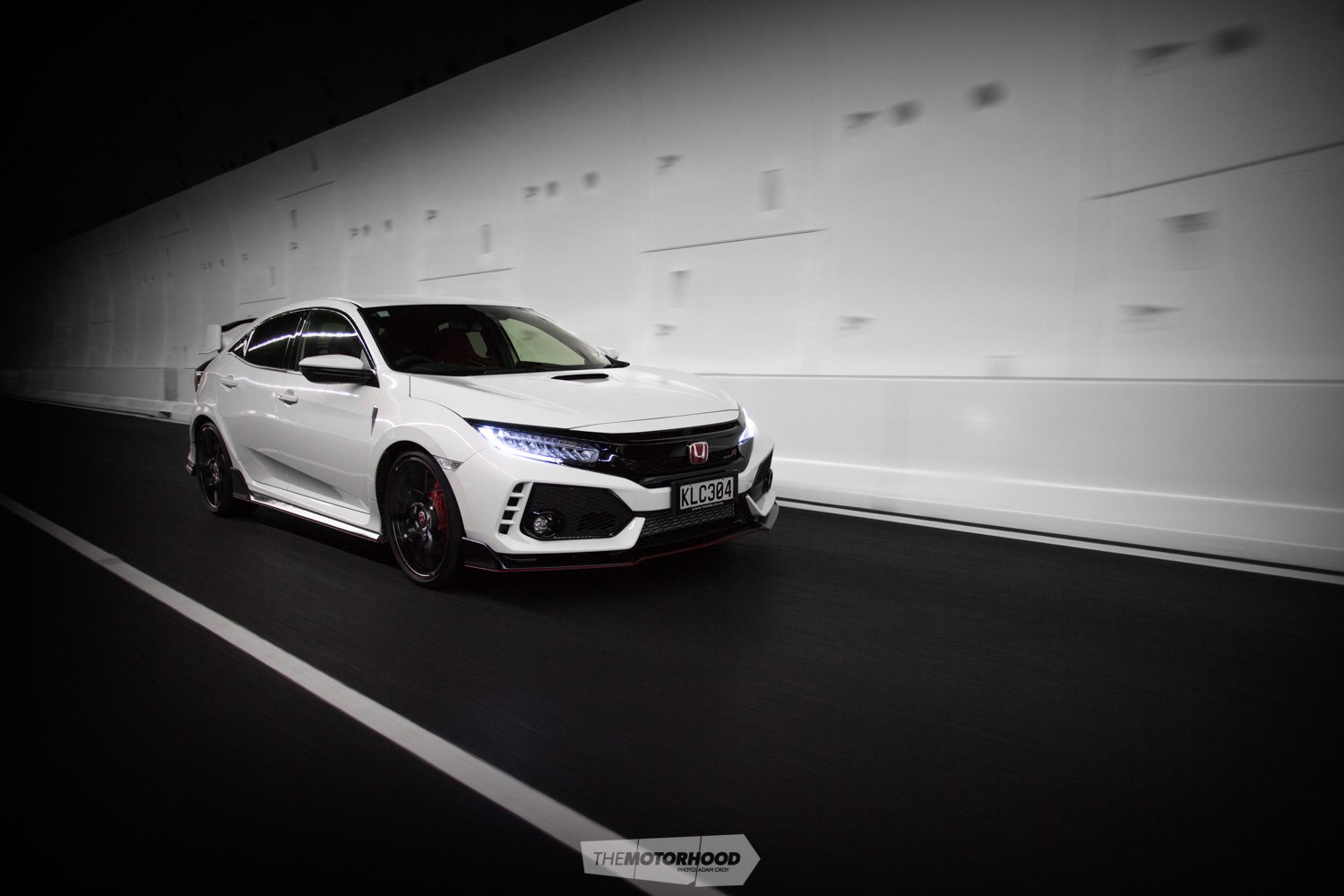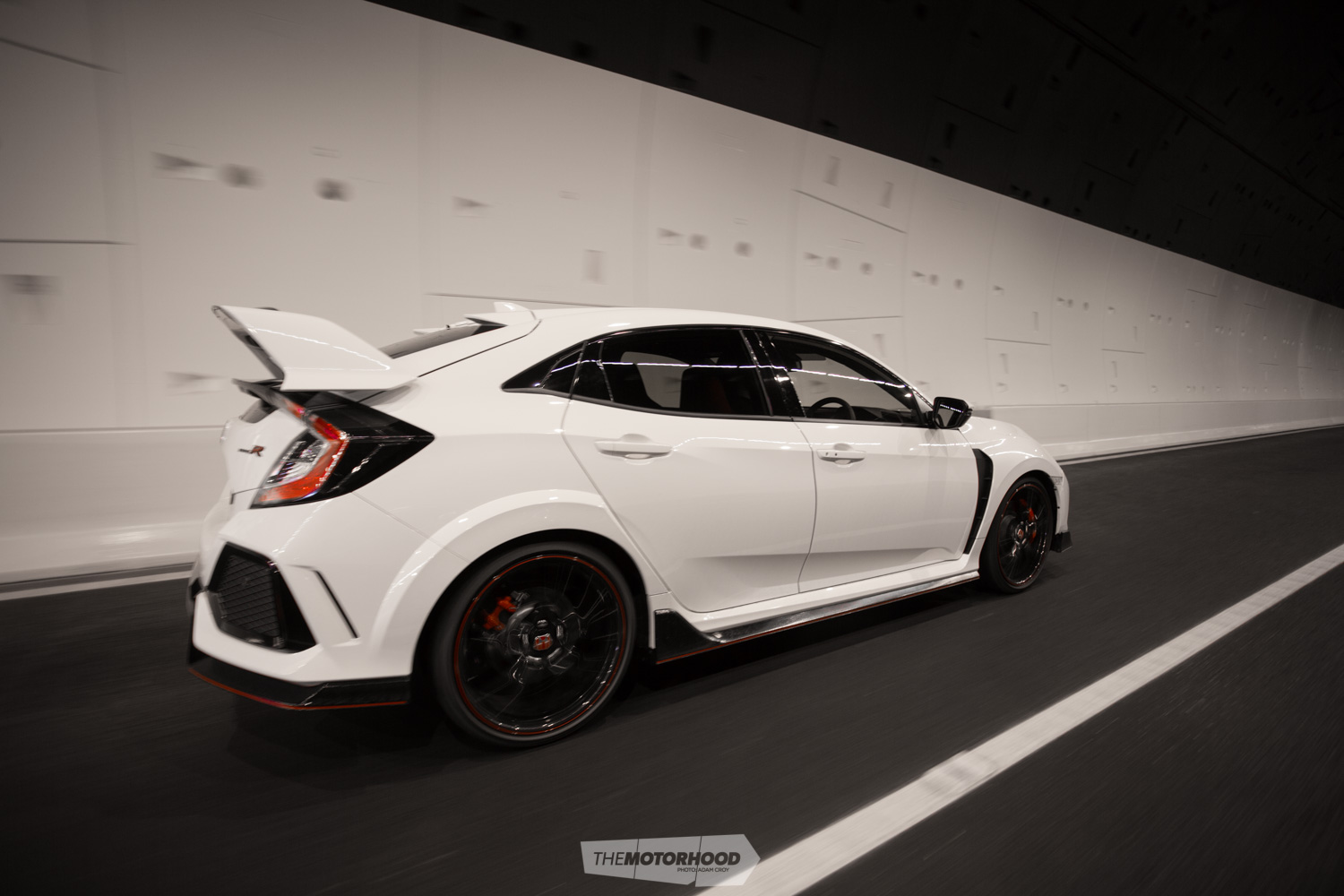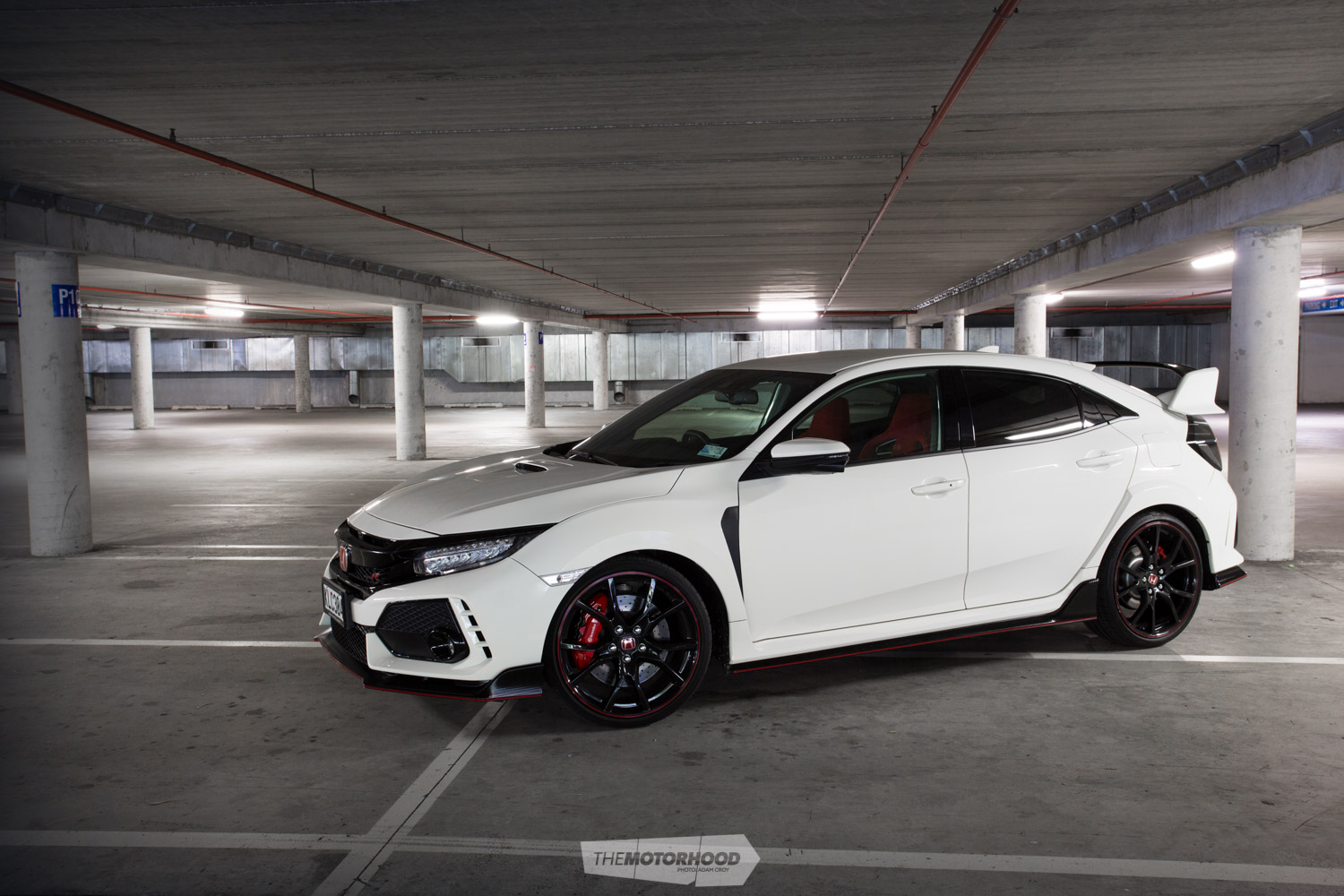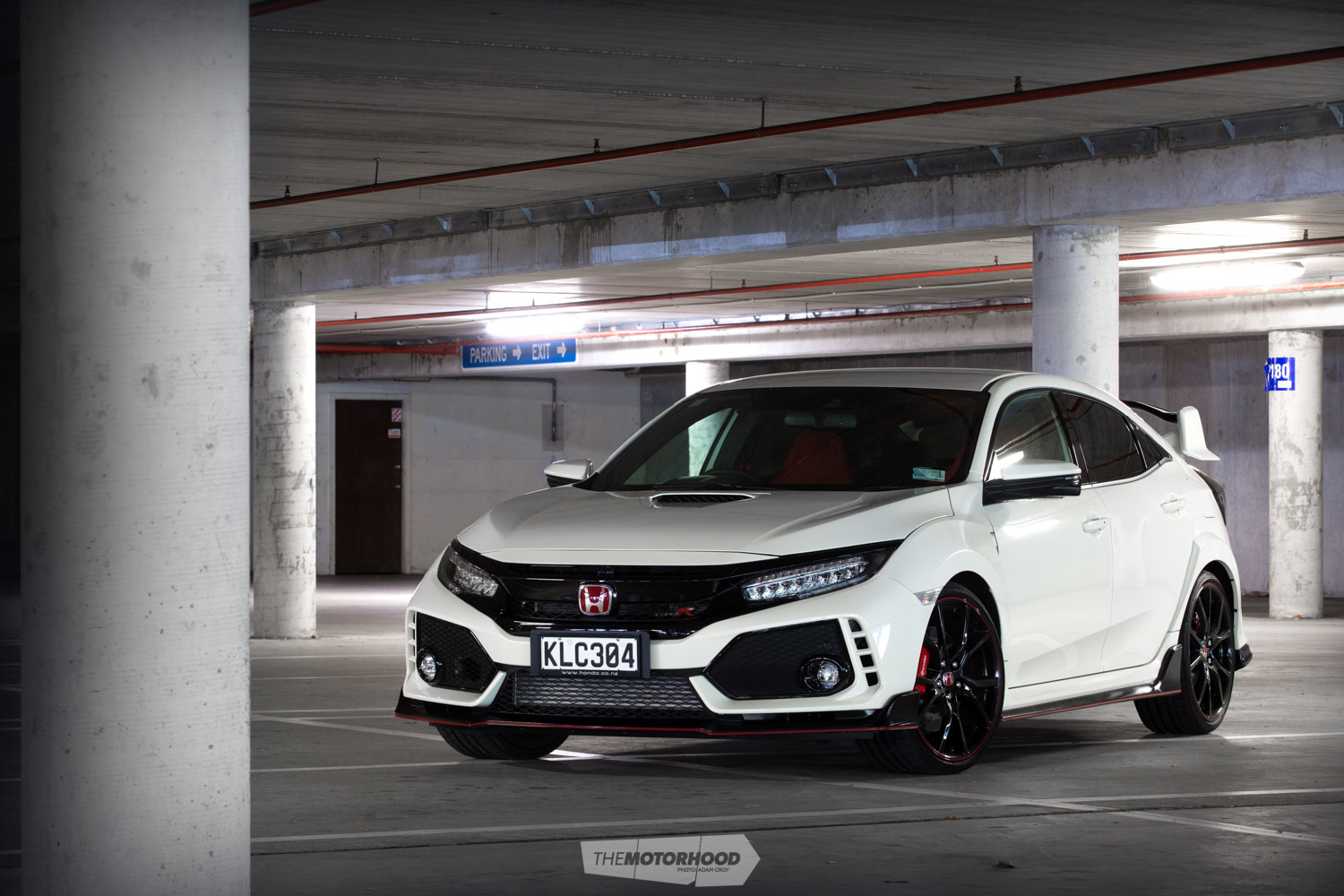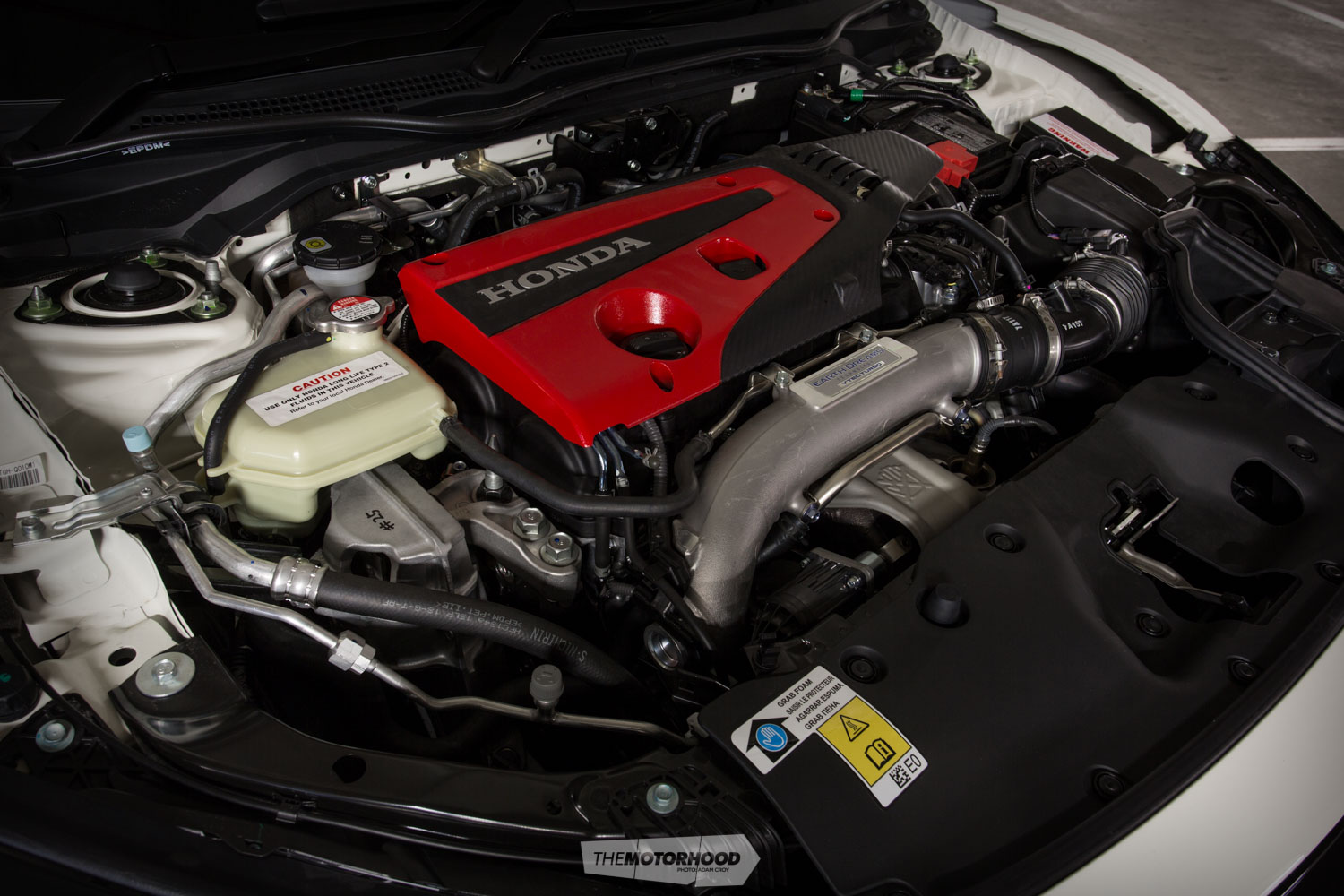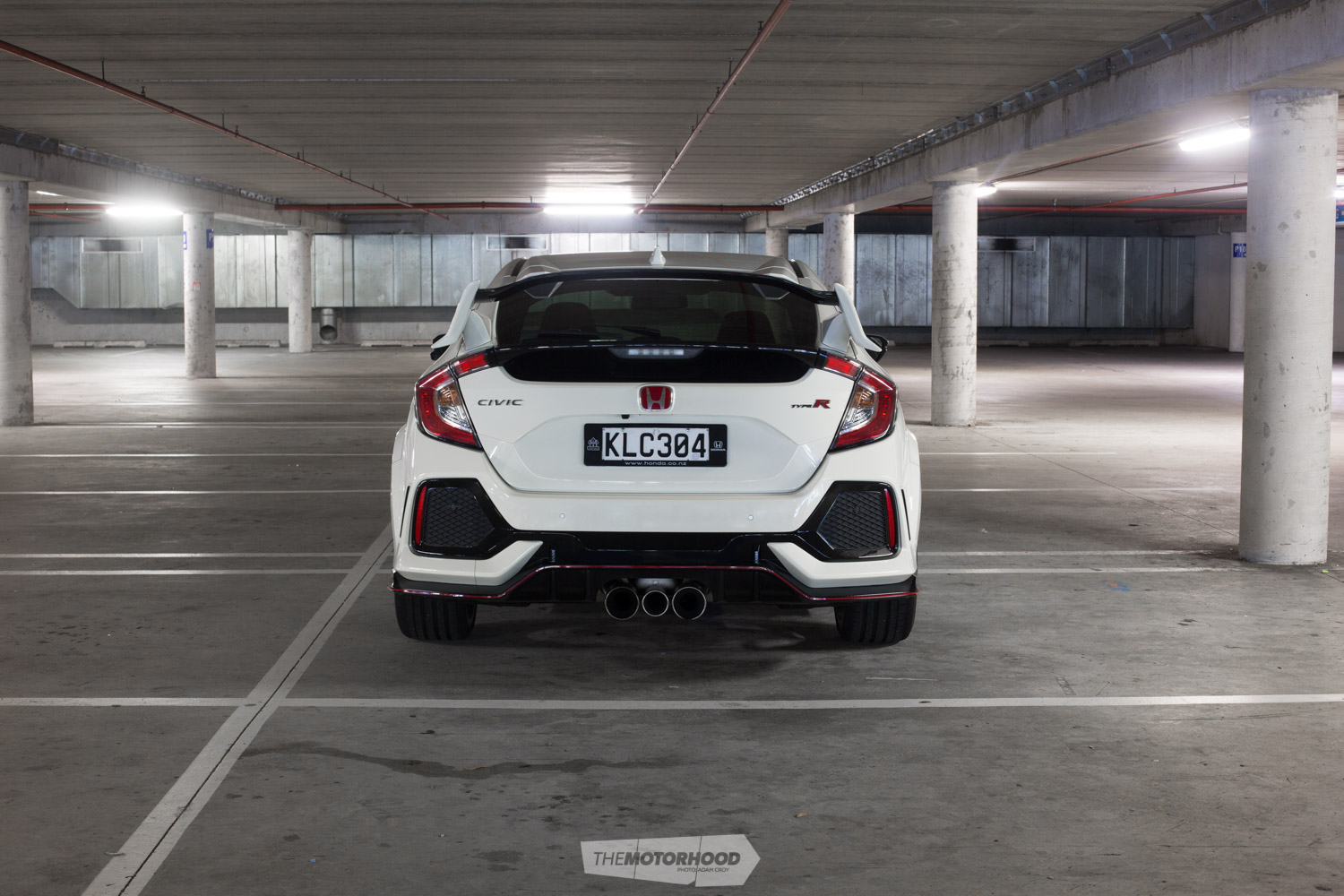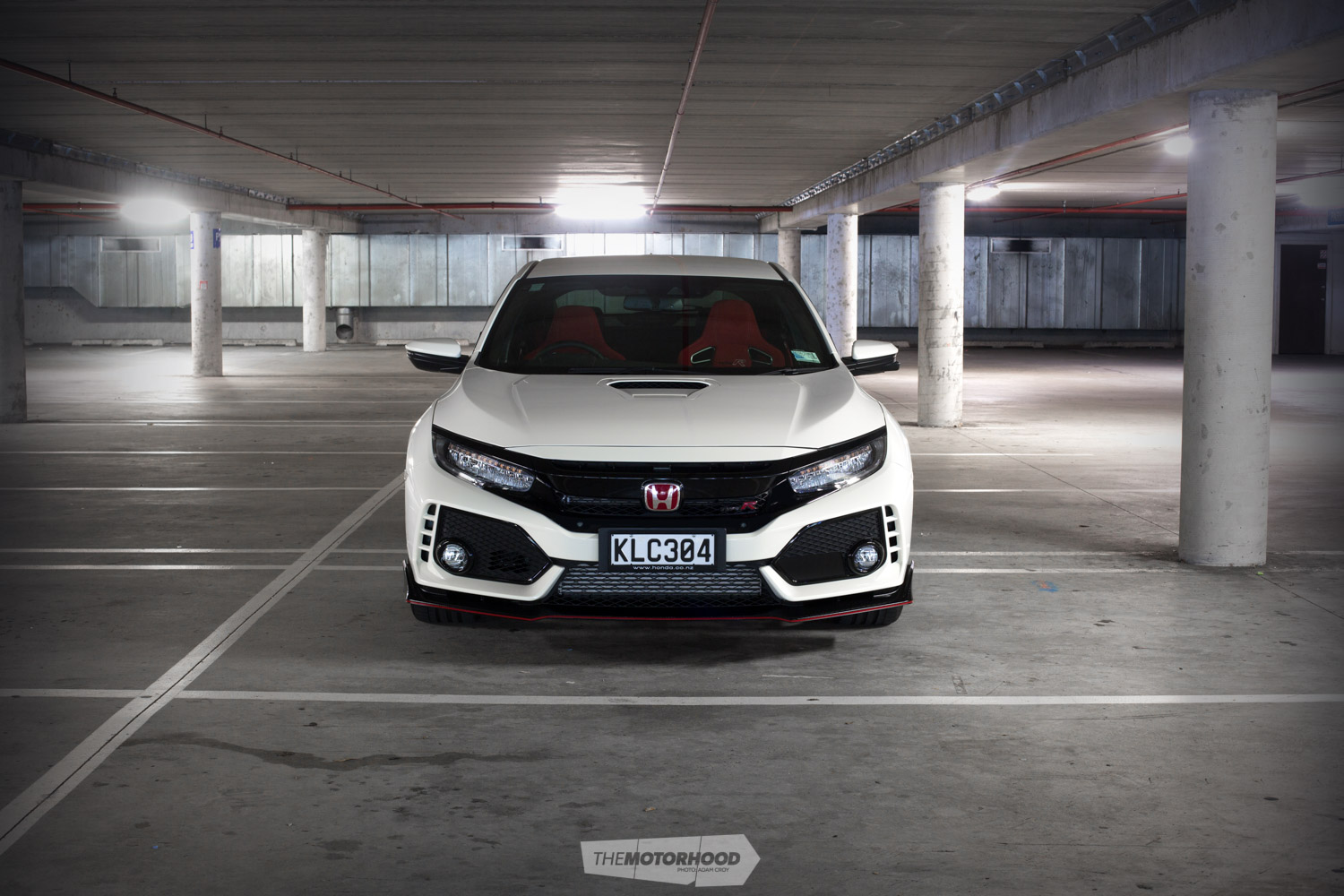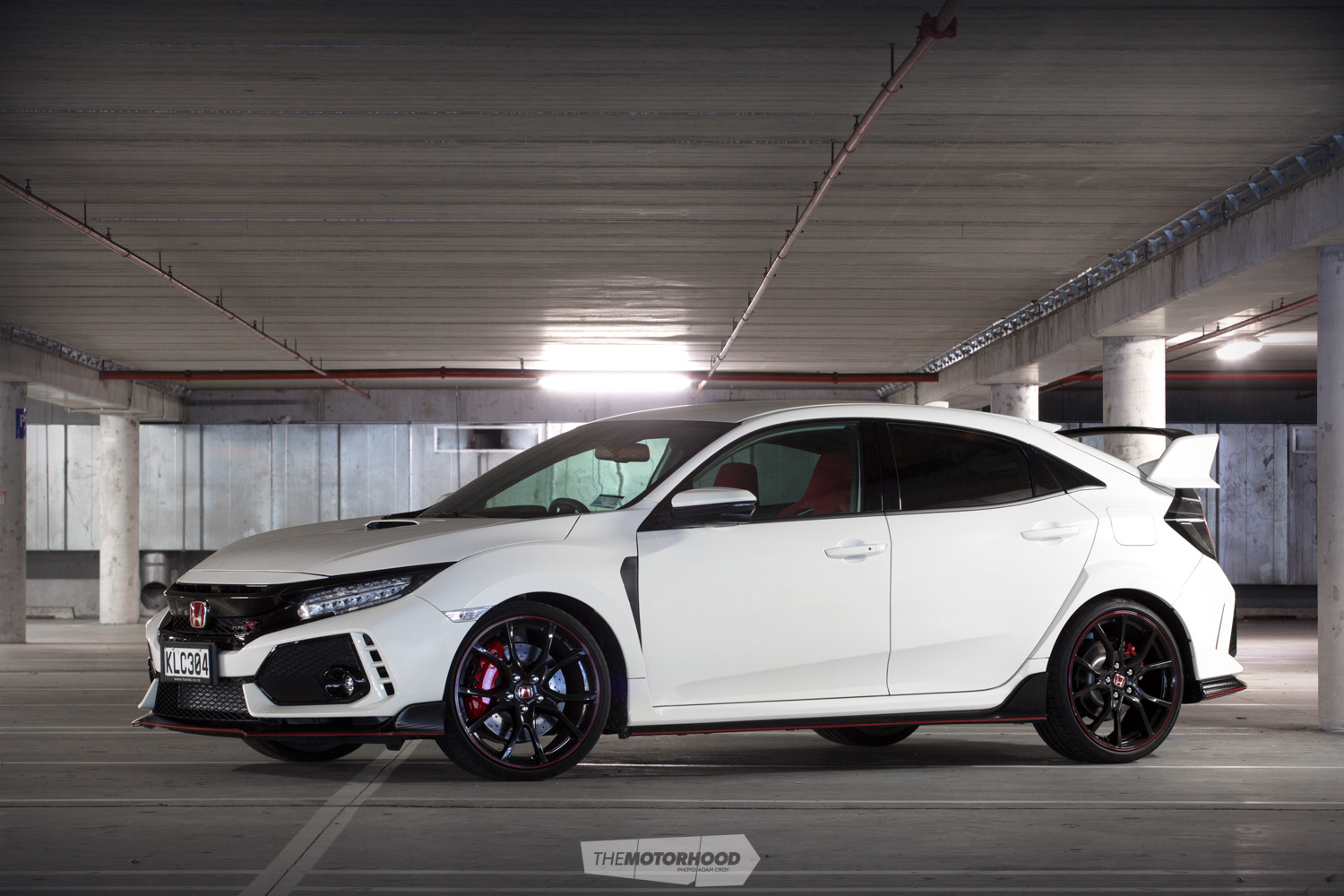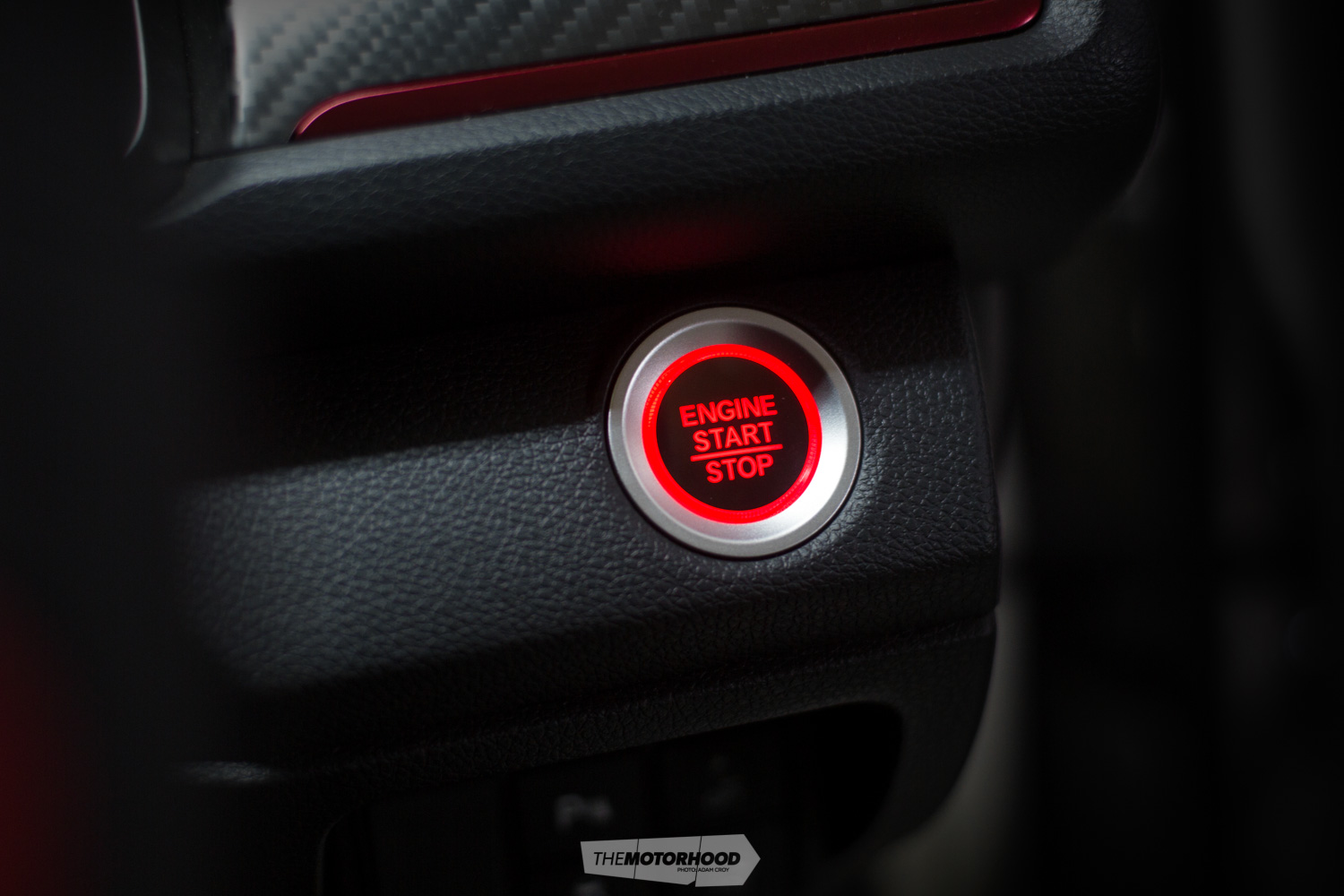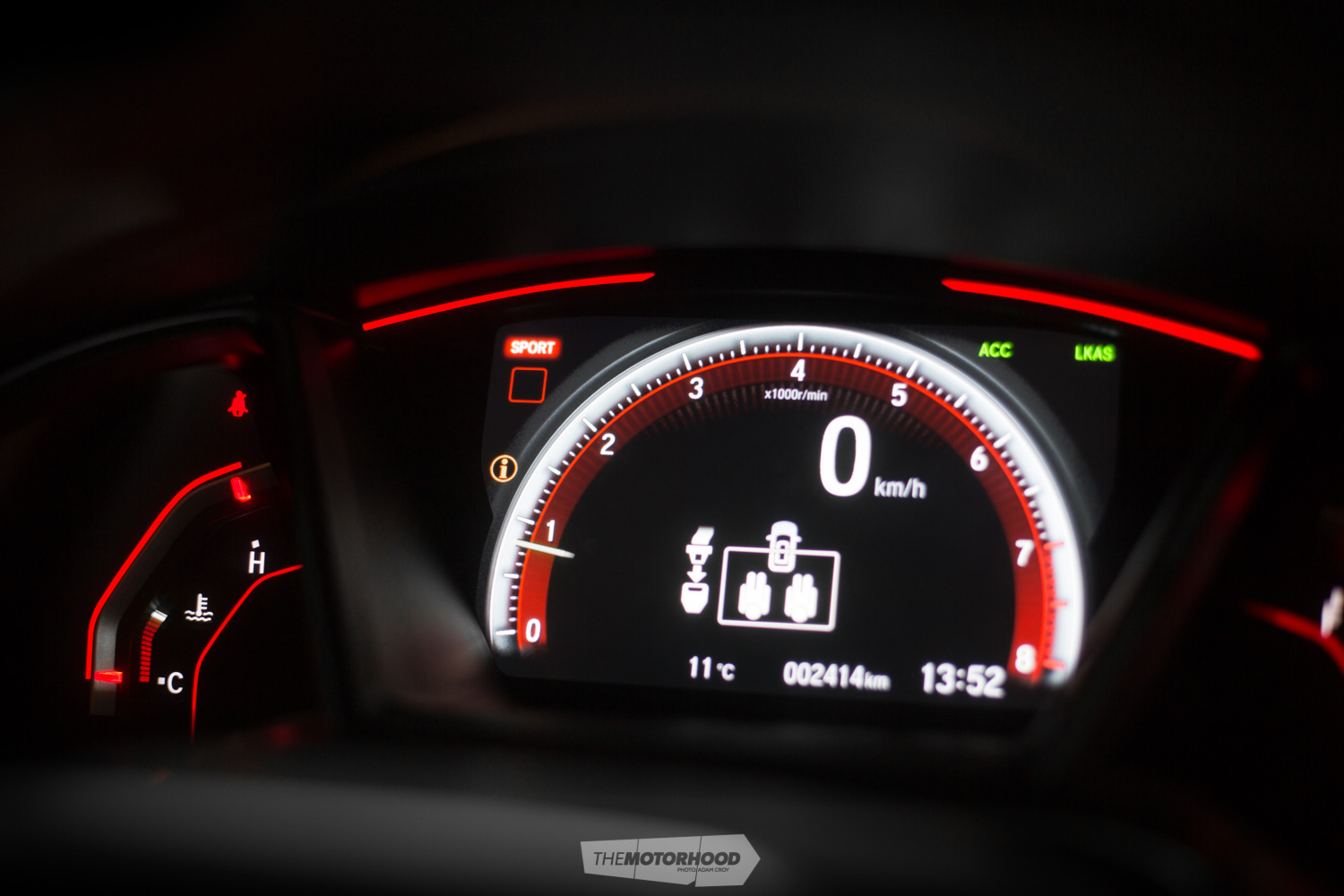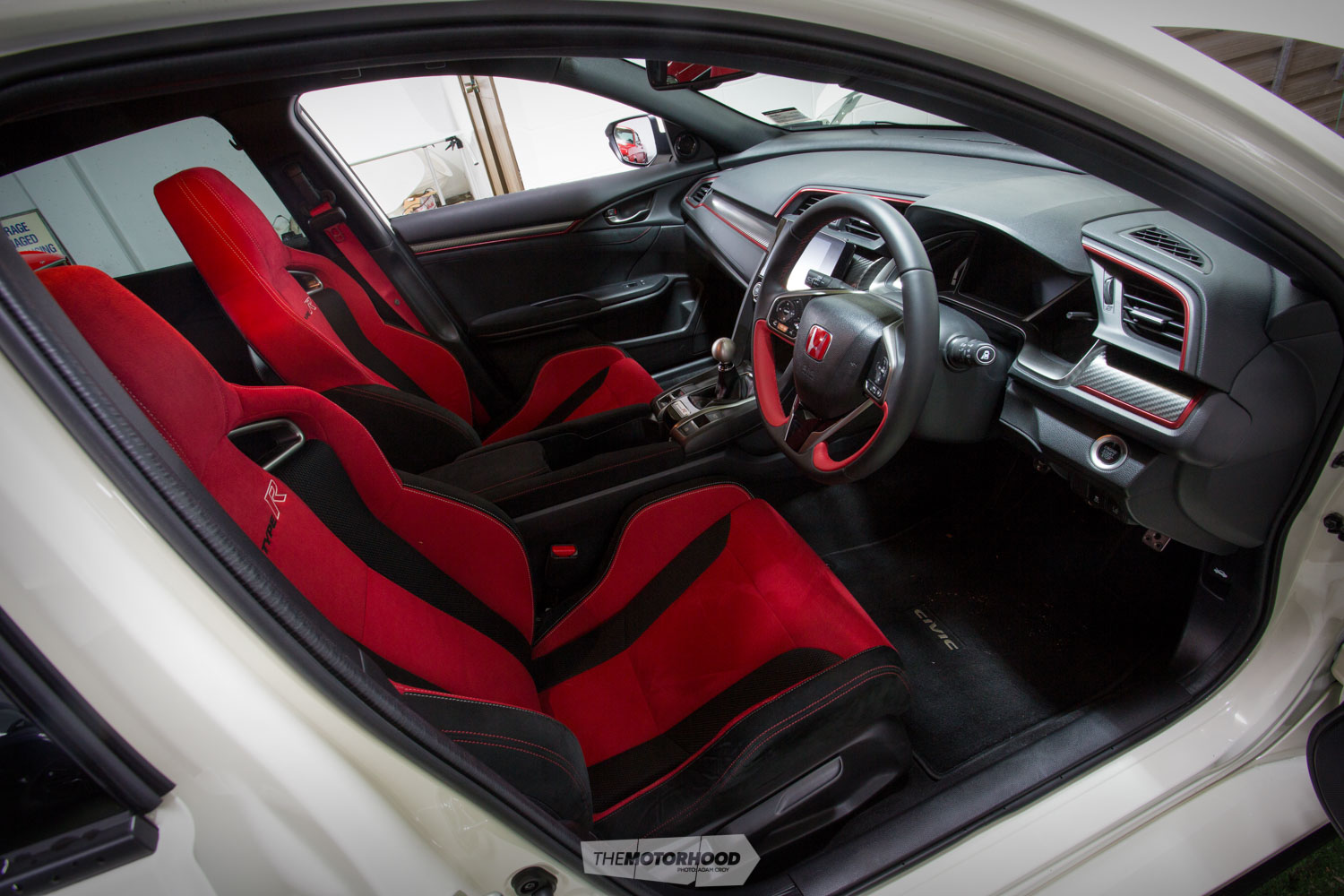We got our hands on the only 2017 Honda Civic Type R (FK8) currently in New Zealand for the first Australasian road test just to find out if a modern-day R can cop it in the land of turbo hot hatches
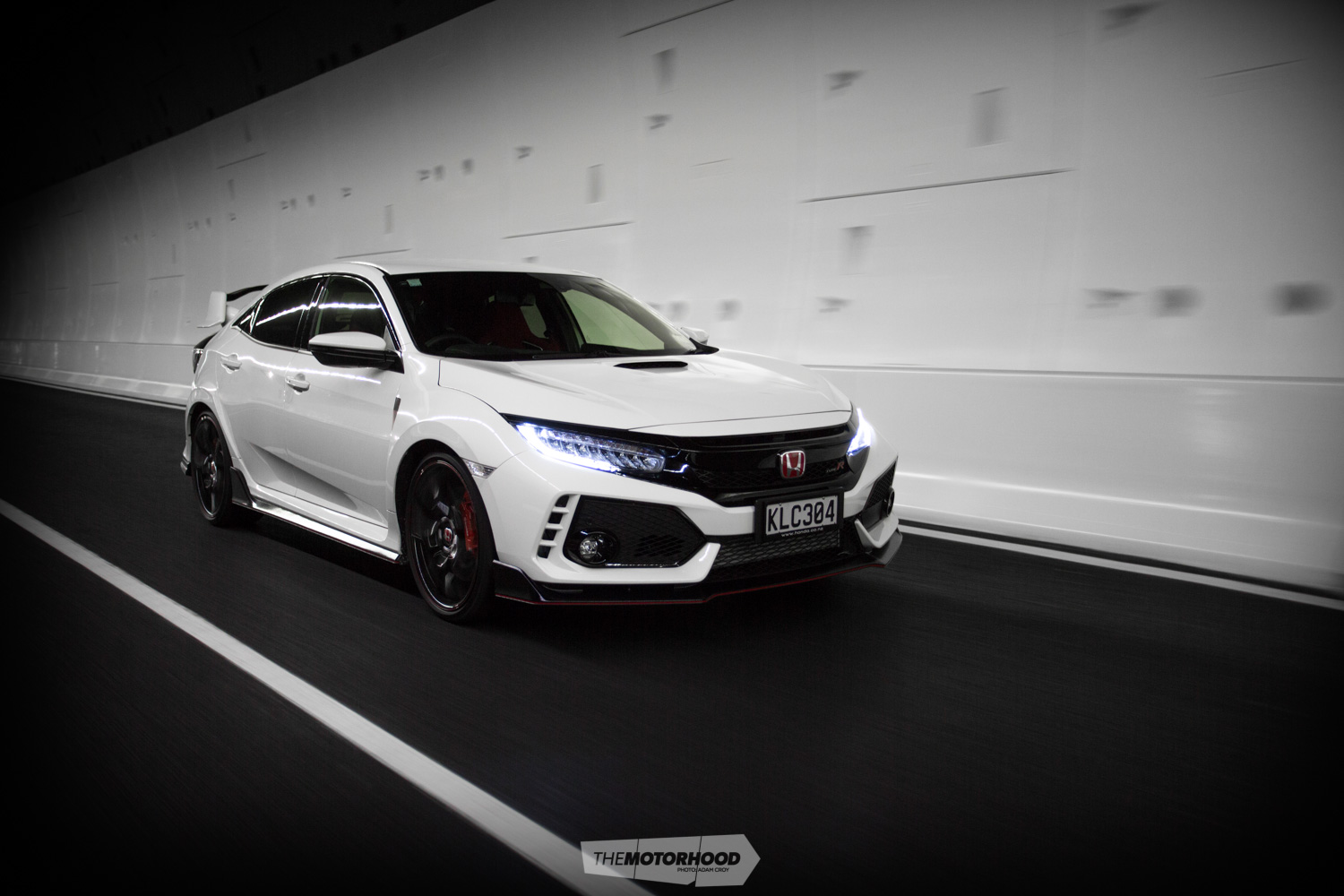
Three words: believe the hype. The release of the 2017 Honda Civic Type R (FK8) has stirred things up something proper among purists and non-Honda fans alike. This is partly due to the fact that there is a snail hanging off the side of the K20 heart that helps it to produce a healthy 228kW, and partly because it set a 7m 43.8s Nürburgring lap time to claim the title of world’s fastest production front-wheel-drive. But perhaps the biggest talking point here is that this is the first generation to be sold new on our shores.
Naturally, this is a pretty big deal for Honda New Zealand, and the example you see before you is the only FK8 in the country until first orders start to appear in September — which is probably why the Honda New Zealand marketing department explicitly asked me — twice — not to break its car. Why Honda would trust NZ Performance Car with it first is beyond me, but, when you are given a brand-new Civic Type R (CTR) to test, you’d better just say thank you, with a smile, before finding the limiter while exiting the dealership driveway.
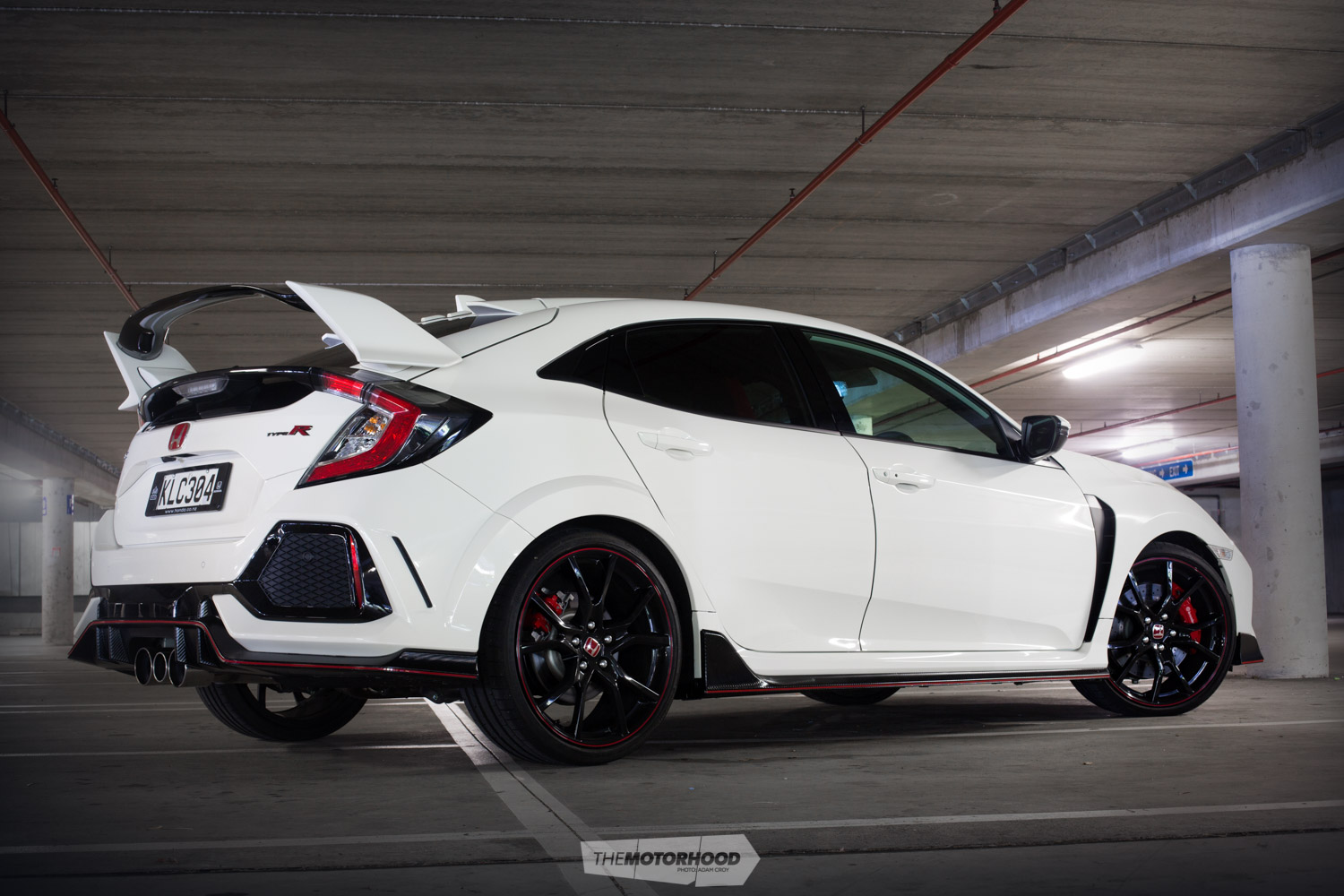
Straight off the bat, the FK8’s visual impact hits you, and though you might think you have a good idea of what the car looks like after viewing all the promo images, the car in the metal is a whole other ballpark — one that you can’t help but instantly like. First, it’s big — almost sedan big. You’re handed an example 165mm longer, 36mm lower, and 2mm wider than the previous generation, with four doors and generous boot space. Yet, despite the size, the FK8 retains a deep hot-hatch aesthetic, inside and out, that tricks you into thinking that it’s smaller than it really is, even while you’re benefitting from all that wheelbase. It must have felt like a gamble in the design room, as the fanbase rallies around the smaller rather than the larger, but the FK8 happily cruises under the radar and genuinely feels like a nimble, sharp hatch.
It’s a mean-looking bastard, too, with aero playing a big part in its construction. Up front, you’ve got an aggressive extended bumper that was designed to inhibit air turbulence around the front wheels, with a winged carbon-fibre splitter paired with deep side skirts that channel airflow to create downforce over the front axle. Additional slatted ducts feed into the pumped front guards to reduce static pressure within the wheel arches. Down back, you’ll find a big ol’ ‘wang’ that works in conjunction with vortex generators on the roof line to divert airflow across the arse end, and a carbon diffuser below the wider rear bumper to generate downforce on the rear axle.
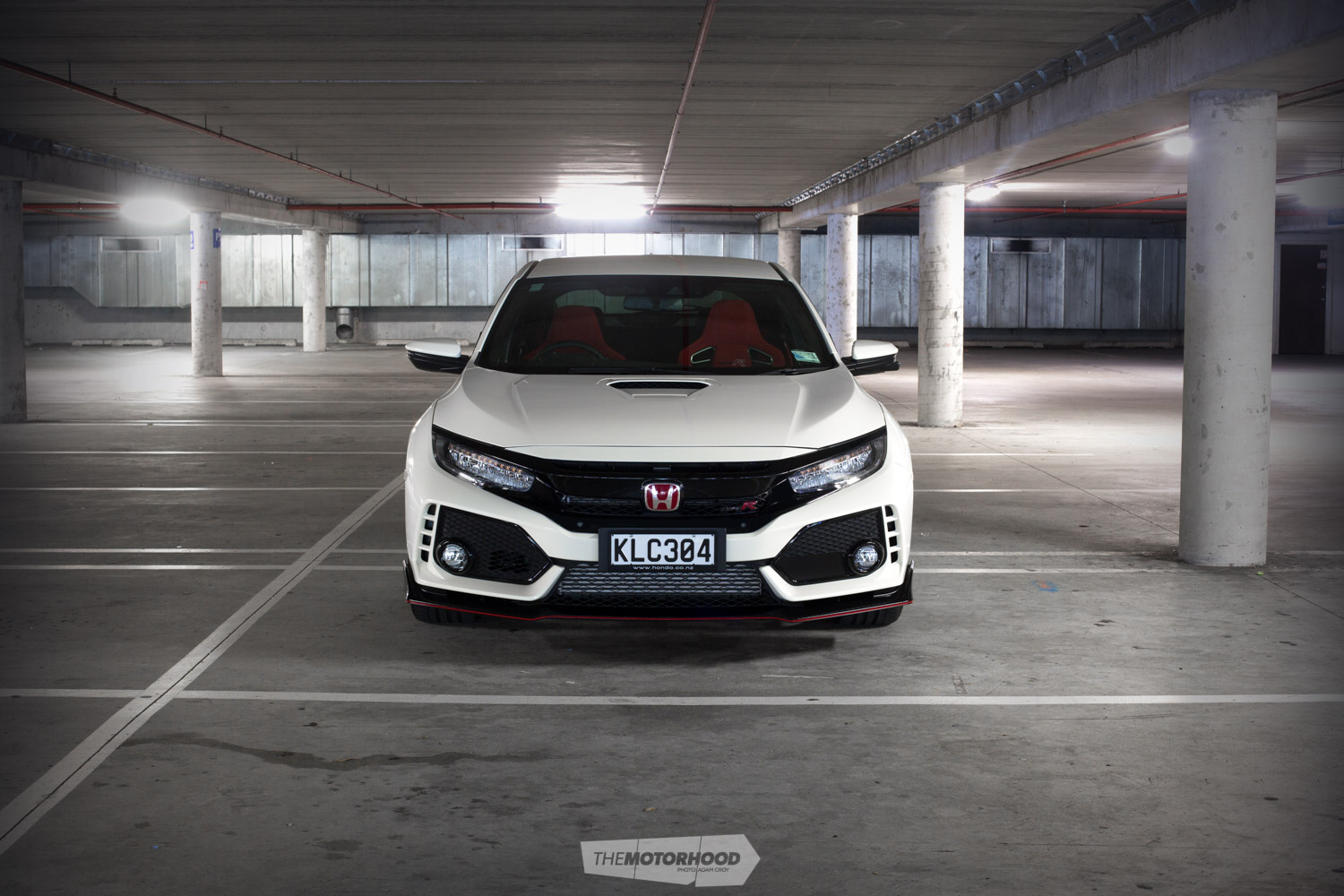
This is no base-model Civic with a few bits of extra trim thrown into the mix. The CTR has always been about combining usable power with a stiff chassis and a focus on minimal weight, along with super-balanced handling. The FK8 is no exception. Its foundation is claimed to deliver the most sophisticated chassis dynamics set-up in the model’s history: it features advanced dual-axis and multi-link suspension, adaptive damping, dual-pinion variable-ratio steering, agile handling assist, and the braking power to match. Under the bonnet, it packs a turbocharged K20 carried over from the previous generation, which Honda seems to have gone to considerable lengths to tweak for a more refined delivery of power and torque — all 228kW and 400Nm of it.
So, how does all that translate into driver feel and performance when pushing the limits on the track? Despite what the timid start-up and idle noise would suggest, hammering it straight out of Hampton Downs’ pit lane confirmed my suspicions pretty quick, as I was greeted with the familiar sound of a highly strung VTEC mixed in with all the right kinds of turbo noises. It was there that I was sold; everything else that followed was simply a bonus.
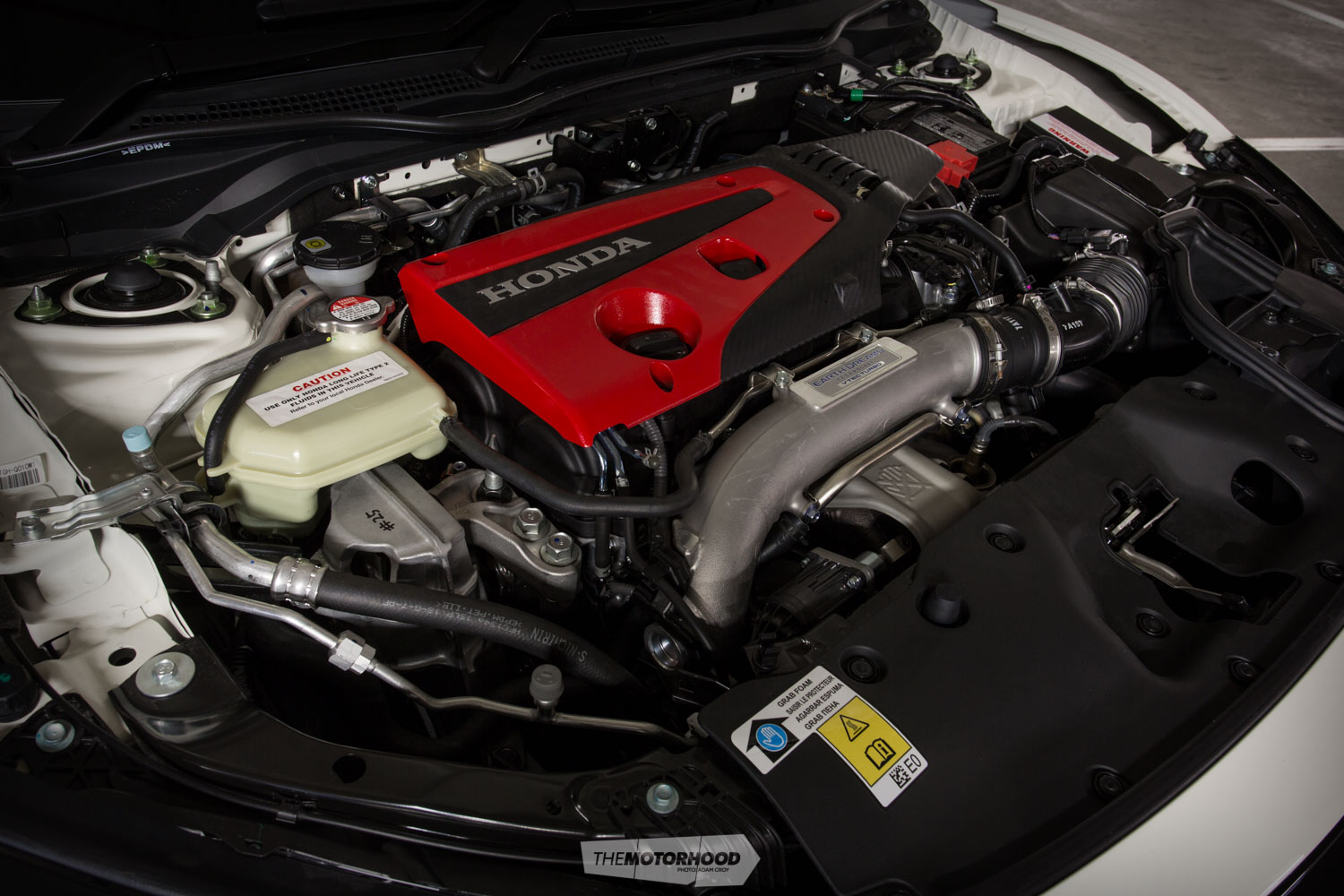
Acceleration was rapid — the kind that pushes you back into those tight Type R seats, and, within a blink of an eye, you’re into double digits and approaching the first corner fast. A quick stab of the brakes with a well-timed downshift — exposing the unmissable sound of the super-tight six-speed box’s rev-matching system — made for a sharp turn through the the apex, then delivered crazily smooth cornering and minimal amounts of body roll. The suspension and aero created a sucked-to-the-ground feeling in both straight-line pulls and through corners, even with a hearty amount of speed thrown into the mix.
Repeating this recipe of too much speed with only just enough braking before throwing it through the corners highlighted just how much grip can be delivered from a front-wheel drive without the need to worry that you’d understeer straight into the kitty litter — and I’m not scared to admit that, although I like to think I know how to pedal, the FK8 simply had too much in it for me to find its limits. Clearly, Honda has focused a huge amount of development into creating effective aero, with a fine balance between suspension and power dynamics to achieve considerable amounts of grip and stability.
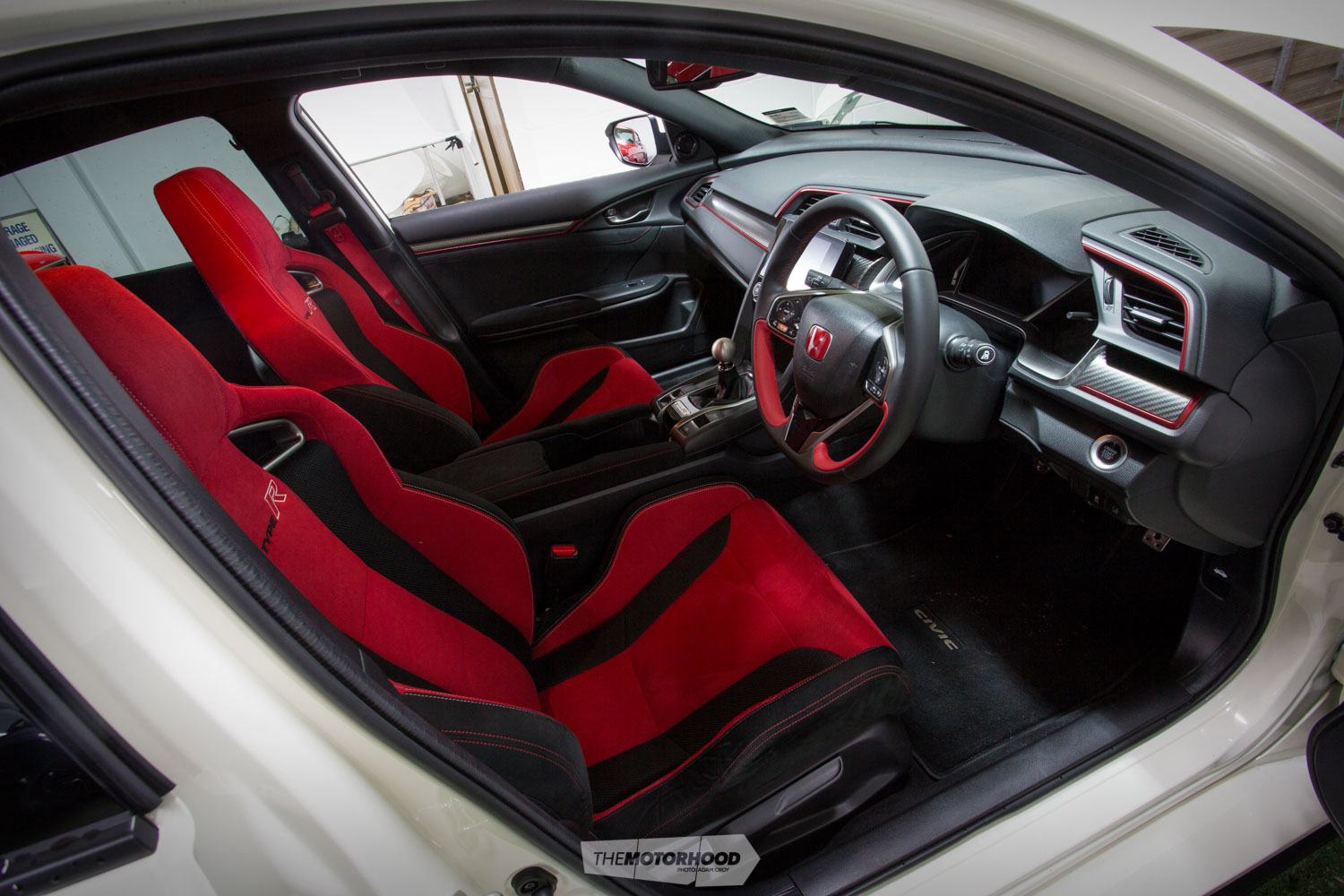
I’m stoked to say that it performed great out on track, because I wanted this car to perform like it read on paper as much as those of you reading this will want it to. But what surprised me is that it was really out on the road where the FK8 cemented its status. Rapid acceleration, outright speed, and cornering ability are impressive; however, managing to translate that back to comfort in regular driving conditions is where most cars let you down. After all, this is a road-goer, not a race car.
Where else to test that, then, than by driving to work in peak-hour Auckland traffic? I didn’t even have to switch out of R+ mode — which configures the suspension, steering, and power into ‘track’ settings from Sport or Comfort — to find out that it can easily be pedalled like a daily-driver. So much so that, at times, it was easy to forget I was sitting inside an aggressive weapon that was itching for a clearing in the traffic — though the fascinated looks from passers-by should have been a hint. And, when there was a clearing … well, that’s a story for another day. Low-down power delivery is smooth, quiet, and comfortable, the six-speed box shifts like a hot knife through butter, and although I knew that the clutch had some weight to it, I wasn’t left with a dead leg. You could pack the boot full of shit, take it on a long road trip and smash it through twisting mountain roads, and then have it back in traffic Monday morning without ever experiencing a bad drive.
Verdict:
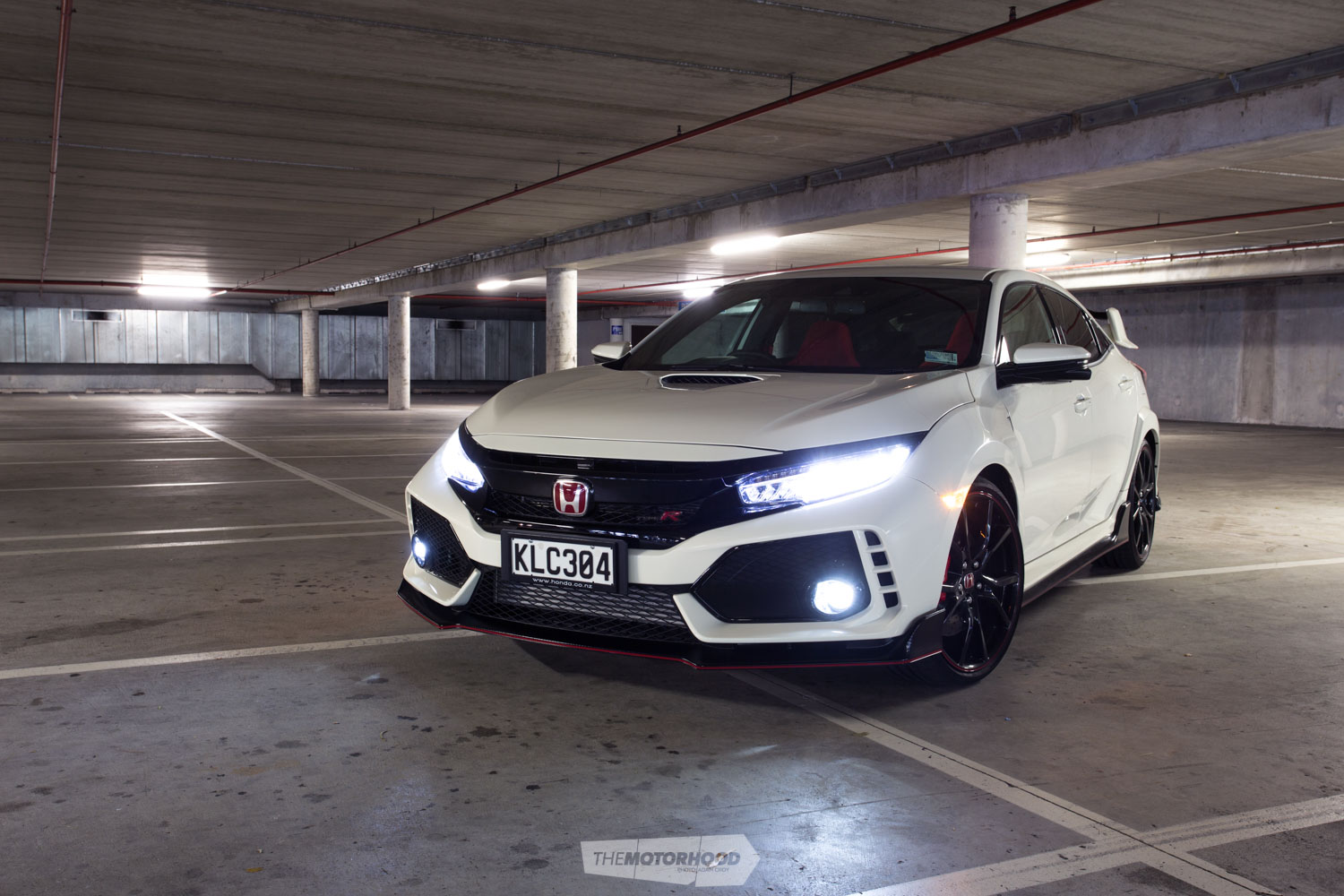
The FK8 takes the heart of the Type R range right back to the original EK9 and adds a heap more power, control, stability, and driving pleasure. For the few days that it was in my possession, my ability to function during work hours was near-on gone, as all I wanted to do was run out and go for a blast. It was the first time that I’ve returned a car and been genuinely sad to not be able to drive it for some time after. For me, and I predict many, many others, this will be one of those future classics that we pay silly money for just to relive years gone by, and, for the current price of $59,900, it’s, without a doubt, your best value-for-money buy on the market.
I look forward to trying to pick one up in a few years’ time, because it’s firmly on my must-buy list, that’s for sure.





